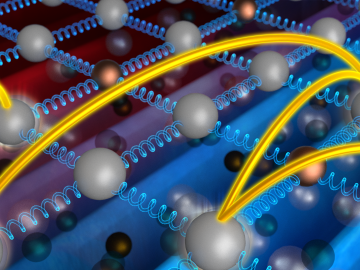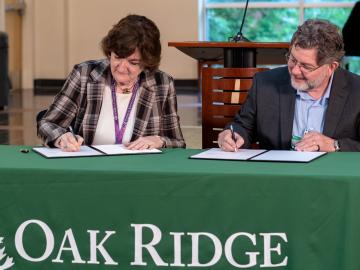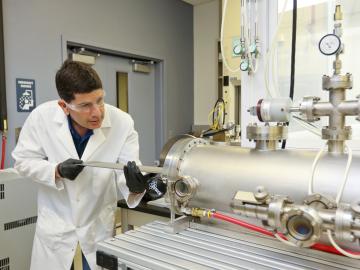
Filter News
Area of Research
- (-) Materials (20)
- (-) Supercomputing (10)
- Advanced Manufacturing (1)
- Biological Systems (1)
- Biology and Environment (1)
- Clean Energy (12)
- Climate and Environmental Systems (1)
- Computational Biology (1)
- Energy Frontier Research Centers (1)
- Fuel Cycle Science and Technology (1)
- Neutron Science (11)
- Nuclear Science and Technology (6)
- Nuclear Systems Modeling, Simulation and Validation (1)
- Sensors and Controls (1)
Media Contacts

Scientists at the Department of Energy’s Oak Ridge National Laboratory induced a two-dimensional material to cannibalize itself for atomic “building blocks” from which stable structures formed. The findings, reported in Nature Communications, provide insights that ...


The US Department of Energy’s Oak Ridge National Laboratory is once again officially home to the fastest supercomputer in the world, according to the TOP500 List, a semiannual ranking of the world’s fastest computing systems.

StealthCo, Inc., an Oak Ridge, Tenn.-based firm doing business as Stealth Mark, has exclusively licensed an invisible micro-taggant from the Department of Energy’s Oak Ridge National Laboratory. The anticounterfeiting technology features a novel materials coding system that uses an infrared marker for identification.


In an effort to reduce errors in the analyses of diagnostic images by health professionals, a team of researchers from the Department of Energy’s Oak Ridge National Laboratory has improved understanding of the cognitive processes


The U.S. Department of Energy’s Oak Ridge National Laboratory today unveiled Summit as the world’s most powerful and smartest scientific supercomputer.

The Department of Energy’s Oak Ridge National Laboratory is now producing actinium-227 (Ac-227) to meet projected demand for a highly effective cancer drug through a 10-year contract between the U.S. DOE Isotope Program and Bayer.

Scientists at the Department of Energy’s Oak Ridge National Laboratory are the first to successfully simulate an atomic nucleus using a quantum computer. The results, published in Physical Review Letters, demonstrate the ability of quantum systems to compute nuclear ph...


